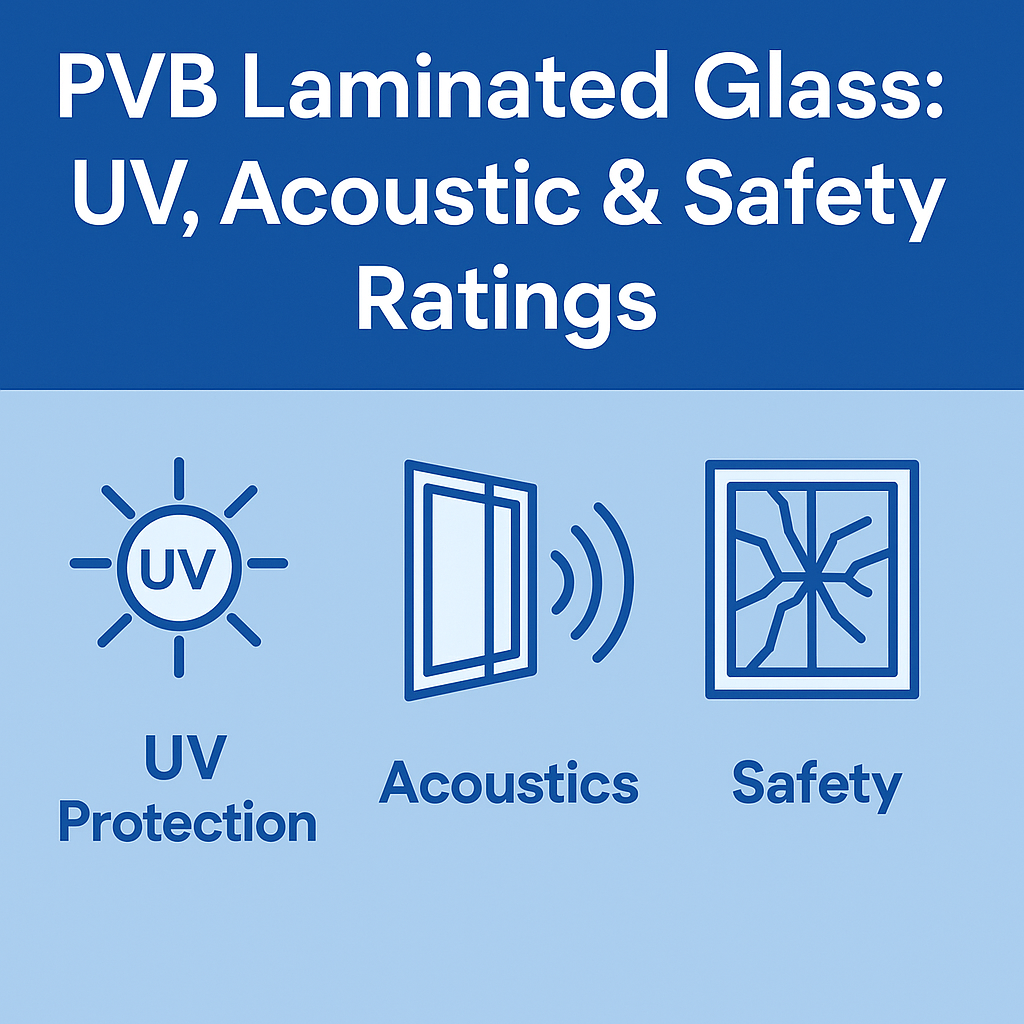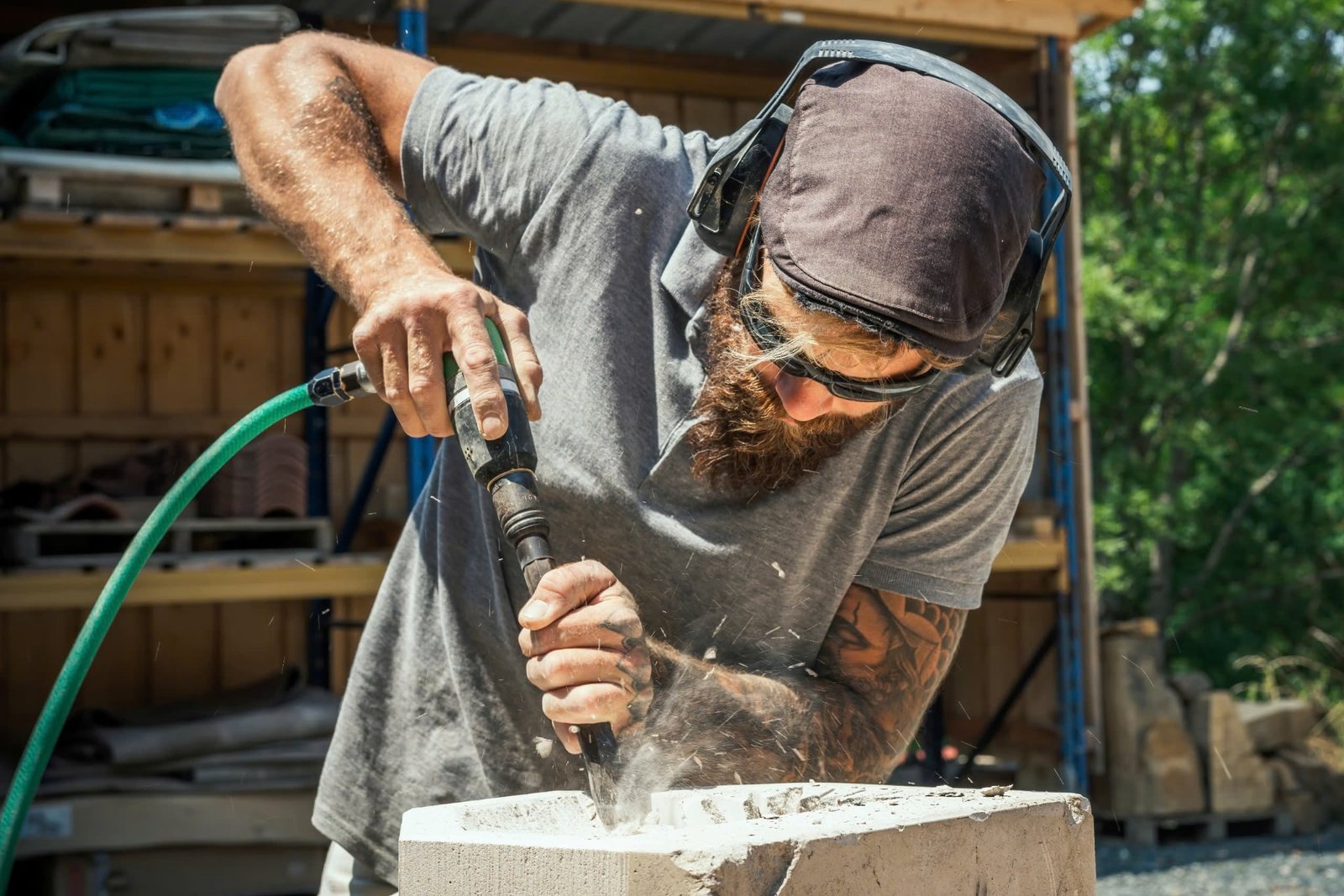
This guide offers a detailed look at these critical ratings and how PVB laminated glass meets or exceeds the most demanding performance standards.
PVB laminated glass is widely regarded as one of the most versatile and high-performing materials in architecture, automotive, and interior design. Its ability to withstand impacts, reduce noise, and filter ultraviolet (UV) radiation makes it a top choice for modern buildings and vehicles alike. However, understanding how laminated glass performs under specific ratings—UV resistance, acoustic insulation, and safety impact resistance—is key to selecting the right configuration for any project. This guide offers a detailed look at these critical ratings and how PVB laminated glass meets or exceeds the most demanding performance standards.
What Is PVB Laminated Glass and Why Its Ratings Matter
PVB laminated glass is composed of two or more sheets of glass bonded together with a polyvinyl butyral (PVB) interlayer. This interlayer is what gives laminated glass its defining properties: it holds the glass together when broken, absorbs sound, and blocks harmful UV radiation.
Whether you’re specifying glass for a façade, automobile windshield, office partition, or balcony railing, these performance ratings ensure the product aligns with safety codes, environmental standards, and user comfort requirements. For a deeper look into laminated glass construction, see PVB Laminated Glass Thickness and Weight Guide.
UV Protection Ratings of PVB Laminated Glass
UV protection is a critical benefit of laminated glass, especially in applications with high sun exposure. The PVB interlayer inherently blocks up to 99% of UV radiation (typically within the 280–380 nm range), helping prevent:
- Skin damage for occupants
- Fading of interior furnishings, fabrics, and artwork
- Degradation of building materials over time
Laminated glass with UV filtering interlayers is commonly used in:
- Museums and galleries
- Retail storefronts with product displays
- High-rise residential and commercial windows
- Automotive glazing systems
There are no universal numeric UV “ratings” like with SPF in sunscreens, but UV filtering capabilities of laminated glass are validated using spectrophotometric testing per ISO 9050 or EN 410 standards. These standards measure the UV transmittance percentage, with lower numbers indicating better protection.
Acoustic Ratings of PVB Laminated Glass
One of the less visible but most appreciated features of laminated glass is its sound-reduction performance. The PVB interlayer, especially in its acoustic-optimized variants, helps dampen airborne sound transmission, making interiors quieter and more comfortable.
Understanding Acoustic Ratings (STC and Rw)
- STC (Sound Transmission Class) and Rw (Weighted Sound Reduction Index) are the most widely accepted ratings.
- Standard laminated glass (e.g., 6.4.1) provides an STC rating of 35–37.
- With an acoustic PVB interlayer, the STC rating can improve to 40–44, depending on thickness and configuration.
This makes PVB laminated glass an ideal choice for:
- Urban residences near traffic or airports
- Hospitals and schools
- Hotels and high-end apartments
- Meeting rooms and conference halls
The performance is influenced by both the mass of the glass and the damping capability of the interlayer. For best results, double-glazing or pairing with other acoustic materials is recommended in extreme noise environments.
For practical cleaning advice post-installation, explore PVB Laminated Glass: How to Maintain and Clean.
Safety Ratings of PVB Laminated Glass
The safety performance of laminated glass is its most defining trait. When impacted, laminated glass cracks but remains intact, held together by the PVB interlayer. This prevents dangerous shards from causing injury or intrusion.
Impact Resistance Ratings
Impact resistance is tested using various global standards, including:
- ANSI Z97.1 (USA)
- BS EN 12600 (Europe) – categorizes impact resistance into classes such as 1B1, 2B2, etc.
- ASTM C1172 – standard specification for laminated architectural flat glass
- SGCC (USA) certification for hurricane-impact glazing systems
Standard PVB laminated glass can achieve a Class 1B1 rating under EN 12600 with a thickness like 6.4.2 or above. In high-performance systems, multiple interlayers or thicker glass can be used to meet bomb-blast or bullet-resistant standards.
Safety ratings ensure laminated glass meets:
- Fall protection codes (e.g., for glass balconies)
- Hurricane impact standards (e.g., ASTM E1996/E1886 in coastal US regions)
- Glass barrier strength for public buildings and transport terminals
For security glazing in vehicles, laminated glass also supports ejection prevention and assists in airbag deployment—see PVB Laminated Glass: Automotive Safety.
Combined Performance: UV + Acoustic + Safety
One of the biggest advantages of PVB laminated glass is its multifunctionality. Unlike other materials that require separate layers for sound, UV, or impact protection, laminated glass offers all three in a single solution:
- UV filtering through the interlayer
- Sound damping via acoustic-grade PVB
- Impact resistance and shatterproof structure
Manufacturers can combine different PVB interlayers—standard, acoustic, tinted, colored, or solar-control—in one laminated unit to meet complex performance specifications. This reduces material usage, simplifies installation, and lowers long-term costs.
How Ratings Influence Project Specification
Choosing the right laminated glass depends on the application and desired performance:
| Use Case | Recommended STC | UV Block (%) | Safety Class |
|---|---|---|---|
| Office Façade | 35–40 | 99% | EN 12600 2B2 |
| Hotel Balcony | 37–42 | 99% | EN 12600 1B1 |
| Hospital Window | 40–44 (acoustic) | 99% | ANSI Z97.1 |
| Vehicle Windshield | 35–38 | 99% | FMVSS 205 |
| Museum or Art Gallery | 30–35 | 99.9% | EN 12600 2B2 |
Acoustic and UV performance also play a role in LEED certifications, WELL building standards, and other green architecture frameworks.
Installation and Maintenance for Performance Longevity
To retain these performance benefits over time, proper PVB laminated glass installation is essential:
- Use compatible framing systems to prevent edge exposure
- Apply UV-resistant sealants in exterior applications
- Prevent water pooling or trapped moisture around edges
For lasting performance, routine PVB laminated glass maintenance should include:
- Monthly cleaning with non-abrasive products
- Quarterly edge and seal inspections
- Annual acoustic performance testing in critical environments
For detailed care guidelines, refer to PVB Laminated Glass: How to Maintain and Clean.
Conclusion: Why PVB Laminated Glass Is a High-Performance Choice
From energy-efficient skyscrapers to luxury vehicles, PVB laminated glass delivers a rare combination of beauty and functionality. Its UV filtering capacity protects both people and property. Its acoustic performance contributes to calm, productive environments. And its safety features ensure resilience in the face of impact, intrusion, or natural disasters.
When selecting laminated glass, understanding its UV, acoustic, and safety ratings helps ensure that the final product aligns with your project’s comfort, protection, and regulatory goals. PVB laminated glass offers a single solution for multiple challenges—making it one of the most valuable materials in contemporary design and construction.
For more in-depth insights, explore:

